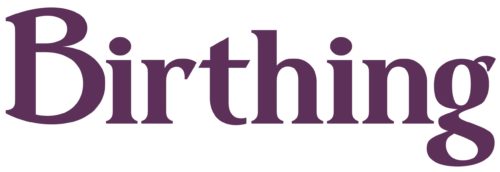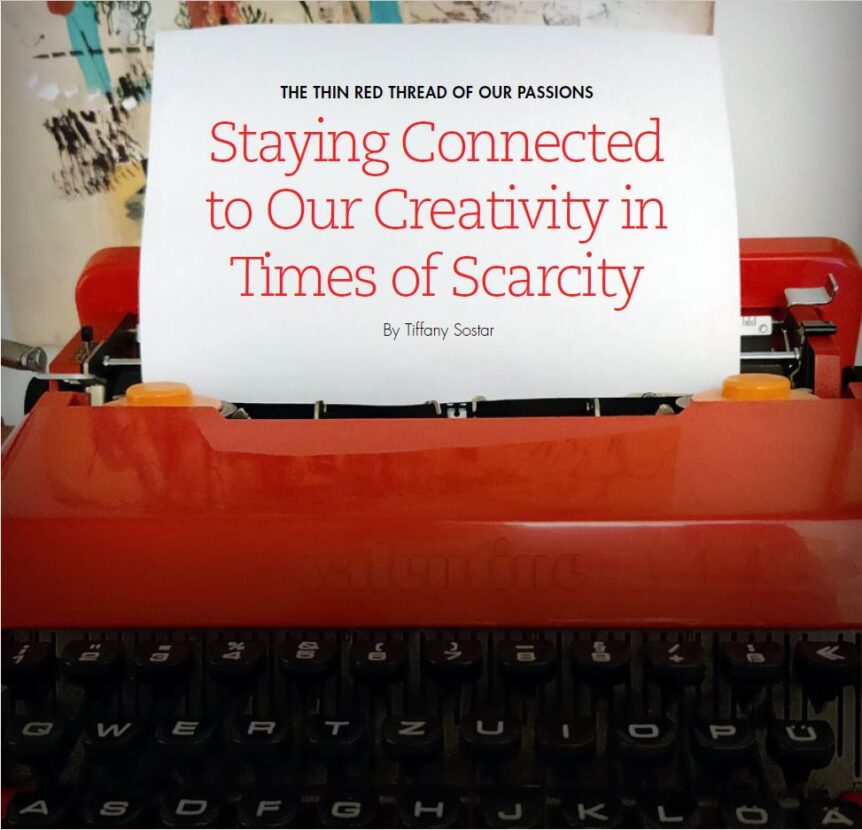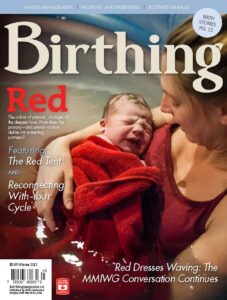By Tiffany Sostar
By now, many of us may have learned that Shakespeare wrote King Lear in a plague time, Sir Isaac Newton did some of his best work during a year of quarantine and Edvard Munch continued to paint not only during, but having contracted, the Spanish Flu.
Some of us follow Louise Erdrich’s advice by keeping a list of authors (or painters, directors, musicians and other creatives) who continue to create despite taking on the work of parenting, reminding ourselves that it is possible to be a caregiver and a creative. That between diapers and dinners and doctors’ appointments, there is still the opportunity to engage in creative work. There is the possibility that we could join the legacy of parents getting up before their children to write, or staying up late, writing
at their kitchen tables or with laptops balanced while a baby sleeps on their lap. The chance to discover novels and memoirs and beautiful books of poetry in the gaps and cracks between all the external pressures, pressures that have historically and still disproportionately fall on women and other marginalized parents.
We have perhaps also learned how the stress of the pandemic has made it hard for most of us to concentrate, how even prolific author Danielle Steele couldn’t write at the beginning of the pandemic because the anxiety and the isolation were too much. So, if we are not like Danielle Steele (and most of us aren’t), then who are we to expect ourselves to still be able to create?
For so many people who consult with me for narrative therapy and so many of my creative friends, and even for myself, there is an impossible set of expectations present for us as creatives.
On the one hand: Keep working, keep creating! We know that creative work is what holds communities together, is what documents experiences for future generations and is vital caring work. We also know that we must continue to create, that it is the red blood of our hearts to write, or paint or otherwise create. It is where we feel ourselves most fully ourselves.
On the other hand: Take a break, take time for self-care! We know that the external pressures are intense, that they have real effects on our ability to concentrate and focus and that anyway we should be prioritizing our children’s mental and emotional well-being, the health of ourselves and our communities. We know that it isn’t optional to take a break; that we must take a break, because we feel our fingers still on the keys and our brains skittering across topics like panicky squirrels, or floating aimlessly in a vast sea of idea-lessness.
There is not a lot of room for grief, anger or fear about what it means to feel distant from our creative work between these two polarized expectations. Especially for those of us who are parents, it can feel like there is very little space, very little opportunity, to grieve for ourselves, and to worry about our lost words or pictures, to see time slipping away and feel like it is taking us further and further from the dreams we may have held since we were little. It feels selfish to trip over our hopes of being published, of having our work shown in a gallery or accepted into a film festival. Don’t we have bigger things to worry about?
The world is changing rapidly, and every change feels more overwhelming. Politics, pandemic, climate crisis, looming food insecurity, economic collapse. We watch these things coming toward our own lives and the lives of our kids and wonder, what kind of world are they growing into?
But our connection to our own creativity does matter.
We have lived in a culture that has devalued the arts for decades. Many of us have had to fight to have our creative dreams taken seriously, sometimes even to give ourselves permission to take our own creative dreams seriously. Writing, art… we are told these aren’t ‘real’ careers. Many of us have had to fit them in around day jobs and the expectations of our parents and partners and peers. Now, parenting in a pandemic, it may feel impossible to even imagine ourselves holding onto those small red threads of connection to our creative dreams.
Am I a writer if I never have time to write?
If, when I sit down to write, I stare at the blank page, words swimming slowly to the surface through the exhaustion or anxiety?
Am I a writer if I can’t even manage 15 minutes a day, because those 15 minutes feel like they’re taking time away from my kids, from the dishes, the laundry, the bills, the ballooning to-do list that is the only thing I seem able to write?
Am I even me?
There is a practice in narrative therapy called ‘remembering.’ It’s often used when someone is grieving, and is connected to the idea of bringing relationships close after loss or distance. The basic premise is that our selves are constructed within relationship, that the relationships around us make different narratives possible in our lives, and that we can make choices about who has ‘membership’ in the club of our life. Maggie Carey and Shona Russel write that, “The hyphen is all important in thinking about the distinctions between remembering and remembering, as it draws our attention to this notion of membership rather than to a simple recalling of history.”1
It is possible to use these same questions and ideas to bring close, to solidify and reaffirm our relationship with our own creative hopes, dreams, skills and histories. To give our creative selves (or our playful selves, which are often connected to our creative practices) full membership in the club of our life, even when the pressures we’re under and a scarcity of time or energy make it difficult.
One thing I have found to be true is that everyone who worries about what it means to be distant from their creative practices has kept a connection to those hopes and dreams and practices. The very presence of worry or fear or grief indicates that the creative passion is still there, even if it is distant. The relationship to the creative hope or practice may not be what they want, but the hope or the caring or the desire is still there, and that is worth honouring.
This narrative practice is meant to help ‘re-member’ our creative selves, to bring them close at times when they feel distant.
Want to see the printed article and the rest of our Winter 2021 Issue?
Get a copy here!
_________________________________________________________________
1. https://narrativepractices.com.au/attach/pdf/Remembering_Common_Questions.pdf



